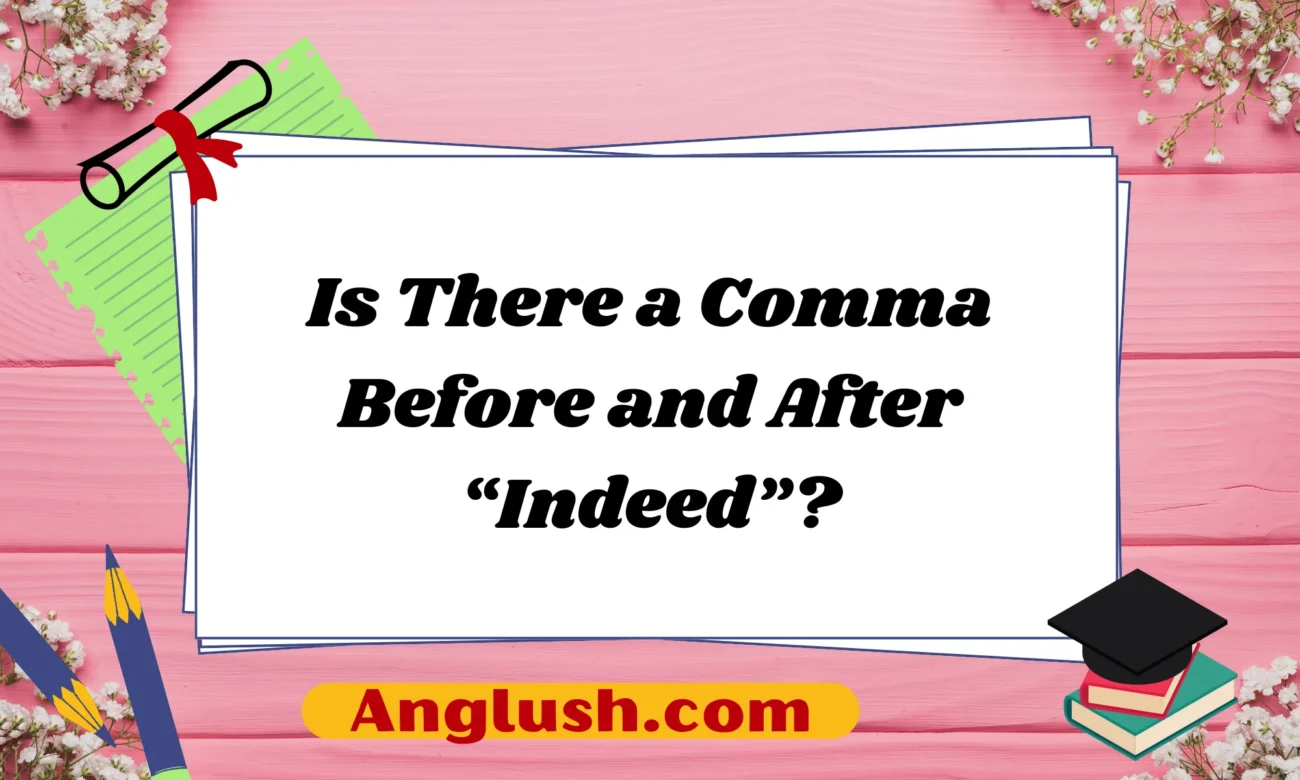Introduction
The word “indeed” is a versatile adverb that can express emphasis, agreement, confirmation, or even contrast, depending on how it is used. However, a common question among English learners and writers is whether a comma should be placed before and after “indeed.”
The answer to this depends on the function and placement of “indeed” in a sentence. This article explores the grammatical rules governing comma usage with “indeed,” provides practical examples, and offers alternative expressions that can be used in different contexts.
When to Use a Comma Before and After “Indeed”
Commas play a crucial role in clarifying meaning and improving readability. When using “indeed,” comma placement depends on whether the word is used as an interjection, adverb, or transition.
Here are the key scenarios where commas are required:
1. When “Indeed” Is Used as an Interjection
If “indeed” appears at the beginning or middle of a sentence to emphasize agreement, it is typically set off by commas.
✔ Correct Examples:
- Indeed, this is the best course of action.
- The results were, indeed, surprising.
- She was, indeed, the most talented singer in the competition.
In these cases, “indeed” functions as an interjection and is surrounded by commas to separate it from the main sentence.
2. When “Indeed” Is Used for Emphasis
If “indeed” is used within a sentence to emphasize a preceding statement, it should also be enclosed in commas.
✔ Correct Examples:
- He is, indeed, a remarkable teacher.
- The evidence proves, indeed, that she was right.
- It was, indeed, a difficult challenge.
Here, the commas indicate a pause, emphasizing the word “indeed.”
When a Comma Before and After “Indeed” Is NOT Necessary
There are situations where “indeed” does not require commas.
1. When “Indeed” Is at the End of a Sentence
If “indeed” is used at the end of a sentence, it generally does not need a preceding comma unless it follows an introductory phrase.
✔ Correct Examples:
- He was happy indeed.
- The project was successful indeed.
- She enjoyed the concert indeed.
In these cases, “indeed” is closely tied to the preceding words, so a comma is not necessary.
2. When “Indeed” Is Used as a Simple Adverb
If “indeed” is used in a sentence without an interrupting pause, commas are not needed.
✔ Correct Examples:
- He is indeed the best candidate for the job.
- They were indeed surprised by the news.
- The results were indeed impressive.
Here, “indeed” functions like any other adverb (e.g., “truly” or “certainly”) and does not need commas.
Polite, Professional, and Casual Alternatives to “Indeed”
While “indeed” is useful in many contexts, sometimes it may sound too formal or repetitive. Below are some alternative expressions categorized by tone and setting.
1. Formal Alternatives to “Indeed”
These alternatives work well in professional emails, academic writing, and business communications:
- Certainly – “You are certainly correct about the market trends.”
- Undoubtedly – “The company will undoubtedly see growth this year.”
- Surely – “The project will surely meet expectations.”
- Truly – “He is truly an expert in his field.”
- Without a doubt – “Her leadership skills are, without a doubt, exceptional.”
2. Polite and Professional Alternatives
These phrases maintain a respectful tone, making them ideal for work settings and formal discussions:
- Absolutely – “Your insights are absolutely valuable.”
- Of course – “Of course, we will review your request.”
- Positively – “She is positively the best candidate for the job.”
- Verily (Old-fashioned but formal) – “He is, verily, a master of his craft.”
- In fact – “In fact, studies support this claim.”
3. Casual and Friendly Alternatives
For everyday conversations, texts, or informal discussions, these alternatives are great replacements for “indeed.”
- For sure – “That was, for sure, the best meal ever!”
- No doubt – “No doubt, he’ll win the game.”
- Definitely – “She’s definitely going to be there.”
- Yeah, totally – “Yeah, totally, I agree with you.”
- 100% – “That’s 100% correct!”
These versions sound more natural in informal settings while still conveying agreement or emphasis.
11 Texting Examples Using “Indeed” and Alternatives
When texting, people tend to use shorter and more casual expressions than in formal writing. Below are 11 text-friendly examples using “indeed” and its alternatives:
- Indeed, that was an amazing performance!
- That was, indeed, the best pizza I’ve ever had.
- You’re right, indeed.
- Absolutely! I’ll be there at 5 PM.
- For sure, let’s meet tomorrow.
- No doubt, this will be a great event!
- Yep, totally agree with you.
- Without a doubt, he’s the best player on the team.
- Definitely, let’s do it!
- Yeah, totally! I’m excited.
- 100% true, can’t argue with that.
These examples illustrate how “indeed” and its alternatives can be adapted for texting and digital communication.
Final Thoughts
The use of commas before and after “indeed” depends on the context and function of the word. If it is used as an interjection or for emphasis, it should be surrounded by commas. However, when used as a simple adverb, commas are not necessary.
Additionally, “indeed” has many formal, polite, and casual alternatives that can be used depending on the tone and setting of the conversation.

